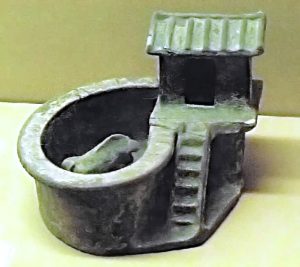Origins of the Porcelain Throne

We all take a lot of modern things for granted these days. We usually don’t even realize it at all, from the ease of a toaster to being able to get fruit year-round. But at the end of the day, it’s a pile of little achievements that have allowed us to build amazing things in the modern era. Even something as simple as indoor plumbing is something that the modern world needs (and I’m sure we all agree on that one!). Indoor plumbing, and plumbing in general, has been a vital part to the modern era for cleanliness, sanitation, and ease. Without it, we wouldn’t have running water in our homes to drink, bathe, wash dishes, or flush waste away. We would have to use holes in the dirt for so much! The sanitation benefits alone are astounding.
Today, we’re looking at one thing we all use daily, without too much thought. There’s one basically wherever we go! What am I talking about? The humble flush toilet. But it didn’t always flush, and there was a time it was just a hole in the ground. This week we’re looking at the history of the toilet. We’ll see how this piece of plumbing hardware became what it is today.
Chutes, Pigs and Cesspits

In the beginning, ancient people the world over used holes in the ground for wells and waste. It wasn’t until about 4000 years ago that some of the first toilets appeared. Digs in India have found drainage systems which could have been early plumbing, while some of the first systems were found in modern day Pakistan. They were simple, especially by modern standards. The basic model of toilet consisted of a single chute and a hole on a seat that would feed into a cesspit or drains along the street. But, not all ancient toilets worked this way. In ancient China, there were outhouses in places which had pigs below them. The waste would fall into the sty, then the pigs would eat it and whatever other food they could get. Ancient tombs would even include clay models of pig toilets buried among them.
The Medieval Period
Obviously, there weren’t a lot of changes to the toilet for a long time. Sure, in many places around the world it would be dressed up, but it wouldn’t be until the garderobe that we’d see another form of toilet. The term garderobe at first didn’t refer to toilets though, but rather a room in medieval castles. It’s since become a term for the toilet in most castles. These were, like the others, simple. The toilet would drain, and there was a hole in the side of the castle where any waste would fall out into a cesspit or the moat even. There were also ones called close stools. These were in some cases just chairs or stools that had a hole in the middle of them and place to collect any waste. They behaved more or less exactly like chamber pots, but looked far fancier with their stands.
The First Flush Toilets

What we see in our bathrooms nowadays is a lot older than many people realize. The first modern flush toilet we’d recognize was invented by a writer. His name was Sir John Harrington, a courtier under Queen Elizabeth the First. It was around 1596 when he designed the first flush toilet, initially called an Ajax.Inevitably, though, Sir John would come to be the inspiration for the infamous toilet nickname: ‘John’. Despite creating the flush toilet (what might seem like a modern miracle in those days), it wasn’t enough for him to be saved from being banished from court due to one of his publications. His relationship with the queen though, saved him from trial!
Modern Developments

The next major development with the modern flush toilet came from a Scotsman. His name was Alexander Cumming, and he invented the ‘s-trap’ in 1775. This simple pipe design prevented foul smells from emerging out of the toilet, which was a big problem with Sir John Harrington’s design. Not long after, Joseph Bramah created the float system in 1778. Almost a century later, the toilet could be crowned the “porcelain throne” with the Thoms Twyford’s ceramic bowl invention in 1870. Around the same time, Thomas Crapper, who is widely considered the inventor of the toilet, began to patent the designs. These factors saw the widespread use of the modern ceramic toilet.
Today’s Toilets
There’s been improvements here or there, but nothing drastic. The most recent major development came from Thomas MacAvity Stewart in 1907. His contribution was the vortex-flush, which gives the flushing swirl. The toilet has come a long way from its humble beginnings as a pit in the ground, and we may yet see other improvements and changes as the years pass. For now it is an invaluable piece of hardware that is welcome at every home.

No Comments